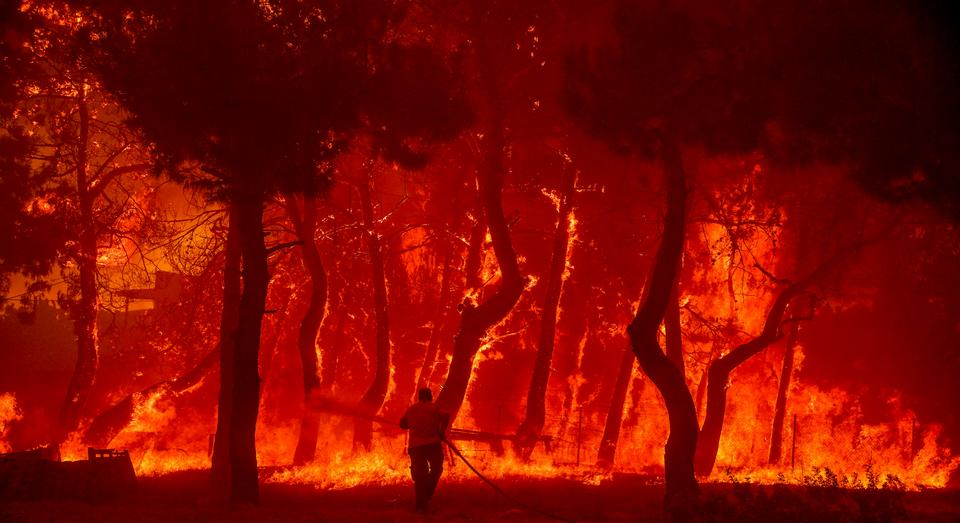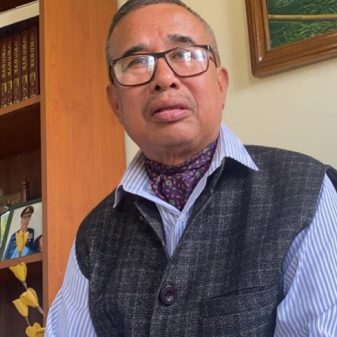
Bivash Ranjan
One of the key elements, fire plays an integral role in society and for the overall sustenance of humanity. Fireis also an important part of the forest environmentand has been vital in preserving healthy forests, recycling nutrients, supporting tree species in regrowth, removing exotic and invasive species, and maintaining habitats for a long period of time. However, the intensity, frequency, and spread of forest fires havesignificantly increased in recent years. Every year, large areas of forests are impacted by fires of varying intensities and extent, with forest fires now becoming oneof the key threats to forest ecosystems.
The past decade has seen a significant rise in the incidences of large and uncontrolled fires, in India and globally. Fires have claimed lives,damaged forests and biodiversity, led to extensive loss of property, and displaced a large number of people in several G20 countries.Forest fires are also a leading cause of forest loss. Between 2001 and 2021, around one third of global forest loss i.e. over 118 million hectares of forests was due to forest fires.
In April 2020, the number of fire alerts rose by 13% around the world compared to 2019, a record year for fires . Separately, countries like the USA, EU, Australia, Indonesia, and Brazil have recently experienced several mega-fires .As a matter of fact, India alone has seen a 10-fold increase in incidences of forest fires over the last two decades . While the total forest cover has increased by 1.12%, the frequency of forest fire incidents has increased by 52%. More than 36% of the country’s forest cover is estimated to be prone to frequent forest fires and more than 62% of the states to high-intensity forest fires .
Similar to other parts of the world, forest fires in India are primarily driven by human activity. Population pressures, current and historic land management practices, the use of fire as a tool, demand for forest resources, negligence, and anthropogenic climate changeare some of the factors that have strongly shaped the contours of the prevailing forest regime .
Fires affect both the physical and chemical properties of soils, particularlythe productive layer;changes in the physical properties lead to loss of productive soil, increased runoff, and lower underground water recharge while changes in chemical properties affectthe soil’s organic matter and nutrient dynamics. Recurrent fires reduce seed sources, ultimately affecting the regeneration and succession of forest ecosystems. In North-Eastern India, the shortening of fire-associated jhum cycles has also had a detrimental effect on soil fertility. Climate change and changes in land use are predicted to increase the frequency and intensity of fires, with a global increase of extreme fires of up to 14% by 2030, 30% by the end of 2050, and 50% by the end of the century . Valuable forest resources, including carbon in the biomass, are lost due to forest fires every year, impacting the flow of goods and services from forests.
Forest firescan have devastating effects on biodiversity by destroying trees, ecosystems, and food supplies and by increasing the susceptibility of surviving animals to predation. Additionally, they can also directly affect the economic state of communities that depend on forests and non-timber forest products as a source of income.The economic losses associated with forest fires may be much greater for smallholders than for large holders considering their greater relianceon forests for a wide range of services and uses. The potential cost of forest fires in India isestimatedto be over INR 1,101 crore per year .
It can be argued that forest fires can have both a negative as well as a positive impact on ecosystems. Historically, fire has played an important role in shaping the flora and fauna; fires play a key role in keeping the forests healthy, recycling nutrients, aiding in the regeneration of tree species, removing invasive weeds and pathogens, and maintaining habitats. Occasional fires can help in controlling fuel stocks that may feed larger, more destructive wildfires. However, incidences of fires havespun out of control with increasing population growth and the resultant demands on forest resources, to the point where fires no longer sustain forest health. In fact, fires are burning larger areasand fire seasons are becoming longer due to the warming climate.
As countries increasingly work to improvesocio-economic resilience to forest fires and other climate-related threats, there is also a need to regenerate forest-fire-affected land. The restoration of ecosystems is an important way to mitigate the risk of fires before they occur and to better recover in the aftermath.Post-fire forest restoration is, therefore, indispensable for maintaining the ecological integrity of forests and for the sustainability of affected forest landscapes.
Keeping in mind Prime Minister Narendra Modi’s vision for India’s Presidency, one that is ambitious, inclusive, decisive, and action-oriented,theEnvironment Climate Sustainability Working Group (ECSWG)will focus on and address thediscussed issues of forest fireswith an aim to drive meaningful action and accelerate ecosystem restoration in forest fire-impacted areas across the G20 countries. Considering the global nature of the rapid and alarming increase in forest fires, the Indian Presidency will encourage the active sharing of knowledge and international best practicesand collaboration between the G20 countries, rooted overall in the principle of One Earth, One Family, and One Future.
(The writer is an Additional Director General of Forests, Wildlife, MoEFCC)





